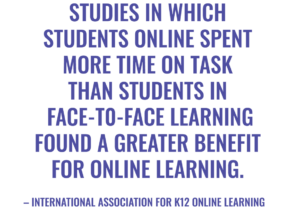5 Key Elements of Social Presence: Part 1 Affective Association
This blog is the first of a five part series on the 5 key elements of social presence. It is based on an article from the September/October edition of Learning & Leading with Technology magazine. The article, written by Amy Garrett Dikkers, Aimee Whiteside, and Somer Lewis, is titled Get Present: Build Community and Connectedness Online.

Image from Get Present: Build Community and Connectedness Online
Affective Association
According to Dikkers, Whiteside, and Lewis (2012), Affective Association “addresses the emotional connections in the course and examines emotion, humor, sarcasm, paralanguage, and self-disclosure” (p. 23).
 In a traditional classroom, we accomplish affective association by seeing students’ expressions and interpreting their body language. In a distance program, we have to be able to “see” our students without having them face-to-face.
In a traditional classroom, we accomplish affective association by seeing students’ expressions and interpreting their body language. In a distance program, we have to be able to “see” our students without having them face-to-face.
They must also see that you are a real person! We don’t want our students to think that we are simply computer programs automatically grading their work. It is very possible (and very important) to build a relationship with your virtual students.
Strategies
- Post frequent announcements. Avoid using the announcements feature just for letting students know when the deadlines are for finals. Announcements can be a great reteaching tool. If you notice that several students need additional support, you can post that here. Use the announcements to motivate your students, as well. This is an easy way to let the students know that you are present.
- Contact your students (synchronously and asynchronously). While email is efficient and can be used with your students, don’t forget to call them as well! An easy way for students to feel a personal connection to their instructor is to simply hear their voice. Make frequent phone calls.
- Give personalized feedback. The key word here is personalized. When grading an assignment, a short comment goes a long way. Students should know that you are personally grading their work. In a recent study done by Northwestern University, students who received personalized feedback versus collective feedback did academically much better in the course (Gallien & Oomen-Early, 2008). View the following websites for tips on providing personalized feedback without being chained to your desk for hours: Strategies for Providing Feedback in Online Courses and Tools for Providing Student Feedback
- Use audio and video. Allow the students to see and hear you. Consider creating a quick video of yourself using your webcam instead of using a video you found on YouTube. It is simple to do and won’t take too much time. Students will appreciate hearing information directly from their teacher. Putting a face to a name also makes it easier and more comfortable for a student to contact you with any problems they may be having.
Reflect for a moment on what changes you can make in your approach to improve Affective Association. Feel free to use the comment feature below to share your goals and tips for improving Affective Association.
Again, I encourage you to visit the article where the idea and much of the content for this blog series originated. It is a great resource for virtual school teachers.


